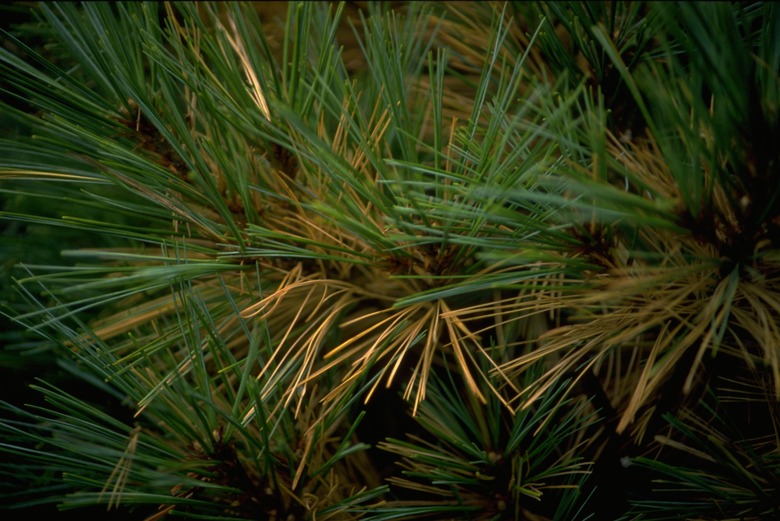How To Tell If Your Pine Tree Is Overwatered
Pine trees (Pinus spp.) are evergreens, which means they don't drop all their needles unless something's really wrong. Overwatering causes more damage to pines than droughts, because the needle-like pine leaves protect against water loss. Pines are adapted to dry soils; too much water can kill the tree. Newly planted pines are most at risk, but older pines can suffer if they sit in low-lying areas where storm runoff or sprinkler water pools. To keep your new pine tree healthy, watch for overwatering signs.
Why Overwatering Is Bad
Step 1
Roots need to absorb oxygen to function effectively. When soil is waterlogged, water fills the spaces in the soil and compacts it, cutting off the supply of oxygen to the roots. Roots that can't get adequate oxygen will smother. They may rot or stop transporting nutrients to the rest of the plant.
- are evergreens, which means they don't drop all their needles unless something's really wrong.
- Overwatering causes more damage to pines than droughts, because the needle-like pine leaves protect against water loss.
Needle Drop
Step 1
Needle drop is an early sign of excessive water. Healthy pine trees lose a few needles routinely, but new needles quickly replace the fallen ones. If you see large areas of brown needles or bare spots on your pines, the problem could be too much water. The browning usually begins low on the tree near the trunk if soggy soil is the problem, and it spreads outward and upward. Problems such as disease and insect infestation also can cause needle drop, so check soil moisture and look for other symptoms before you conclude the problem is overwatering.
Soil Saturation
Step 1
Check the soil around your pine tree to see if it's saturated. Walk near the trunk base, stepping firmly into the soil. Even if the soil is damp, your foot shouldn't sink in or leave footprints; it should bounce back after you take your weight off it. Use a trowel to dig 8 to 10 inches below the surface. Squeeze a handful of the soil. If it's too muddy to hold a shape, or if you can squeeze water out of it, the soil is too wet.
- Needle drop is an early sign of excessive water.
- Check the soil around your pine tree to see if it's saturated.
Proper Watering
Step 1
Established pines adapted to the region where they're growing generally get the water they need from the environment, and don't need your help. For newly planted pines, watering while they're getting established can help them develop deeper root systems that will support and feed the trees as they grow. When you're helping a new pine get established, plan for a couple of long waterings each week during its first couple of growing seasons. A small amount of water each day can cause the tree to develop a shallow root system that won't feed the tree adequately.
